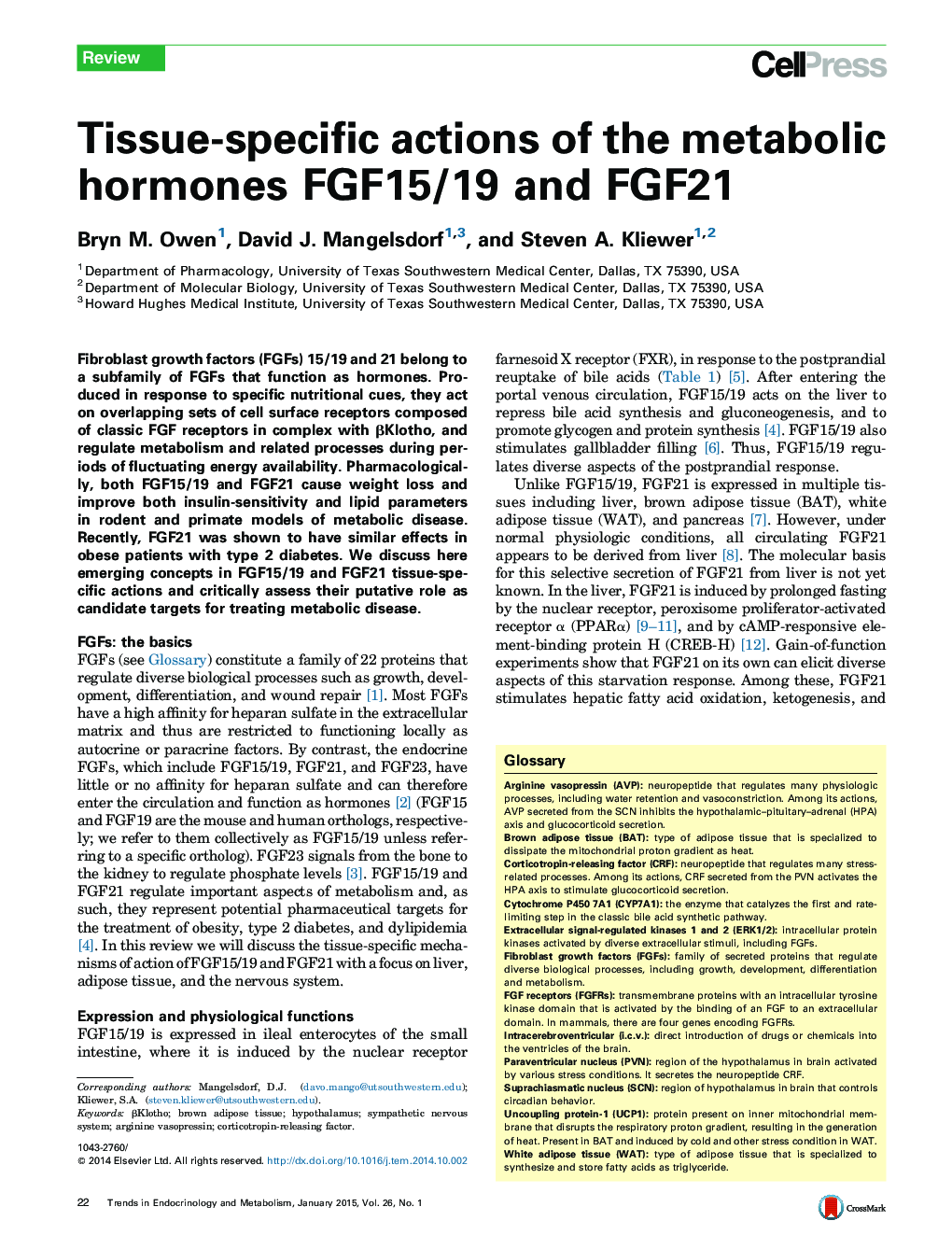| Article ID | Journal | Published Year | Pages | File Type |
|---|---|---|---|---|
| 2810294 | Trends in Endocrinology & Metabolism | 2015 | 8 Pages |
•FGF15/19 and FGF21 have beneficial effects on body weight and insulin sensitivity.•FGF15/19 acts on the liver to regulate bile acid homeostasis.•FGF21 acts on adipose tissue and the brain to exert many of its metabolic effects.•FGF21 activates the sympathetic nervous system.
Fibroblast growth factors (FGFs) 15/19 and 21 belong to a subfamily of FGFs that function as hormones. Produced in response to specific nutritional cues, they act on overlapping sets of cell surface receptors composed of classic FGF receptors in complex with βKlotho, and regulate metabolism and related processes during periods of fluctuating energy availability. Pharmacologically, both FGF15/19 and FGF21 cause weight loss and improve both insulin-sensitivity and lipid parameters in rodent and primate models of metabolic disease. Recently, FGF21 was shown to have similar effects in obese patients with type 2 diabetes. We discuss here emerging concepts in FGF15/19 and FGF21 tissue-specific actions and critically assess their putative role as candidate targets for treating metabolic disease.
